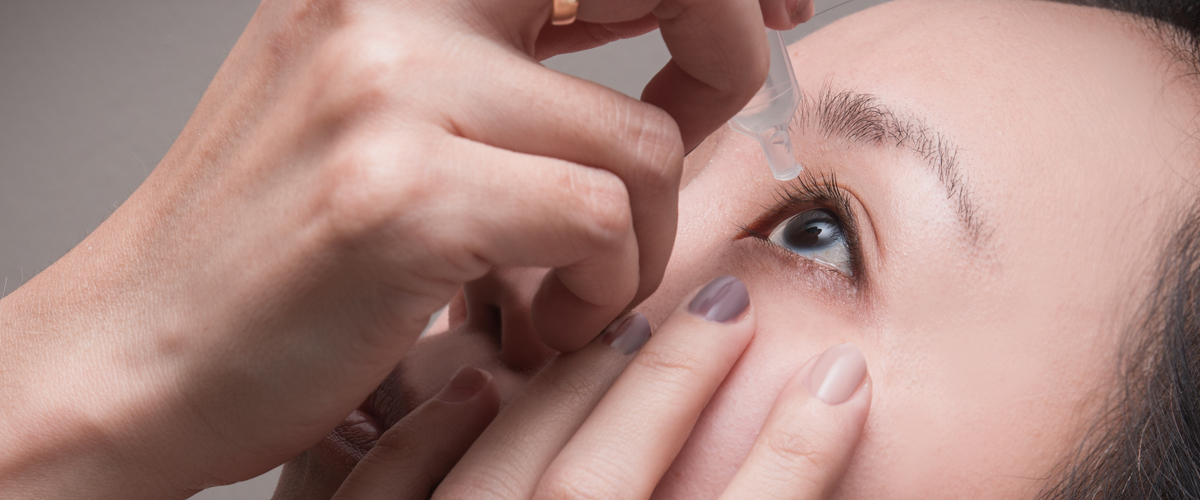
Dry eye disease (DED) is a prevalent condition in clinical practice, affecting millions of patients and significantly impacting their quality of life. As optometrists on the front lines of eye care, we play a crucial role in diagnosing, managing, and educating patients about DED.
Understanding Tear Film Dynamics
A healthy tear film is essential for maintaining ocular surface health and clear vision. It comprises three vital layers:
• Oil Layer: Secreted by the meibomian glands, this layer minimizes tear evaporation.
• Watery Layer: Produced by the lacrimal glands, this layer constitutes the bulk of the tear film and hydrates the ocular surface.
• Mucous Layer: Secreted by goblet cells, this layer ensures even tear film distribution.
Recognizing the Etiology of DED
Several factors contribute to DED, requiring a thorough understanding for effective management:
• Age-Related Changes: Tear production naturally declines with age.
• Medical Conditions: Sjogren’s syndrome, rheumatoid arthritis, and lupus can affect tear production.
• Medications: Antihistamines, decongestants, and antidepressants can cause dry eyes as a side effect.
• Environmental Factors: Dry climates, wind, smoke, and air conditioning exacerbate dry eye symptoms.
• Digital Eye Strain: Extended screen time disrupts blinking patterns, leading to tear film instability.
• Contact Lens Wear: Certain lens materials or improper hygiene can contribute to DED.
• Ocular Surface Disease: Blepharitis and meibomian gland dysfunction (MGD) can disrupt tear film quality.
Clinical Presentation and Diagnosis of DED
Patients with DED may present with a variety of symptoms, including:
• Gritty sensation or foreign body sensation
• Burning or stinging
• Dryness and redness
• Blurred vision, especially during prolonged screen use
• Light sensitivity
• Difficulty wearing contact lenses
• Excessive tearing (paradoxical tearing)
A comprehensive DED evaluation should include:
• Detailed history considering risk factors and medications.
• Slit-lamp examination to assess tear film quality, meibomian gland function, and corneal health.
• Schirmer’s test and tear osmolarity testing to measure tear production and evaporation.
Treatment Strategies for DED
While there’s no definitive cure for DED, a multi-pronged approach can significantly improve patient comfort and vision:
• Artificial Tears: Recommend preservative-free lubricants frequently throughout the day.
• Warm Compresses and Lid Hygiene: Encourage regular lid scrubs and warm compresses to improve meibomian gland function.
• Nutritional Counseling: Advise patients on the benefits of omega-3 fatty acids for tear quality.
• Punctal Plugs: Consider temporary or permanent punctal occlusion to retain tears.
• In-Office Procedures: IPL (intense pulsed light) or other therapies may be appropriate for severe MGD.
• Contact Lens Options: Recommend materials and lens care solutions suitable for dry eyes.
• Management of Underlying Conditions: Collaborate with physicians to manage systemic conditions contributing to DED.
Patient Education and Compliance
Patient education is paramount for successful DED management. Optometrists should explain the chronic nature of DED, the importance of treatment adherence, and realistic expectations.
Conclusion
Dry eye disease is a prevalent and complex condition requiring a comprehensive approach from optometrists. By understanding the tear film, DED’s etiology, and employing effective treatment strategies, we can significantly improve patients’ quality of vision and comfort.
Additional Considerations for Optometrists
• Staying updated on the latest advancements in DED diagnosis and treatment.
• Utilizing appropriate technologies like meibography to assess meibomian gland function.
• Collaborating with ophthalmologists for complex DED cases requiring co-management.
• Advocating for insurance coverage of DED treatments and diagnostic tools.
• By implementing these strategies, optometrists can effectively address dry eye disease, ensuring optimal eye health for their patients.
